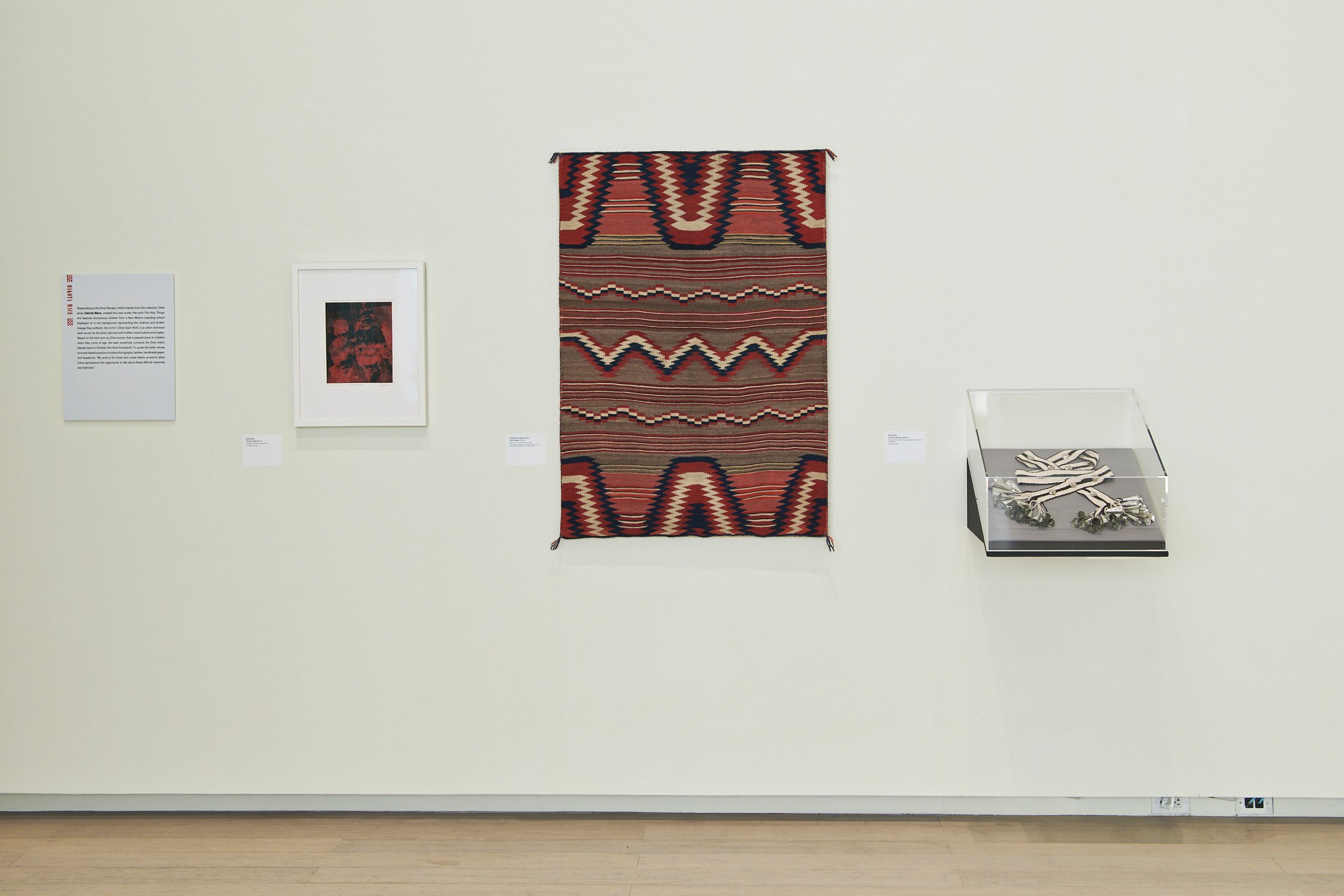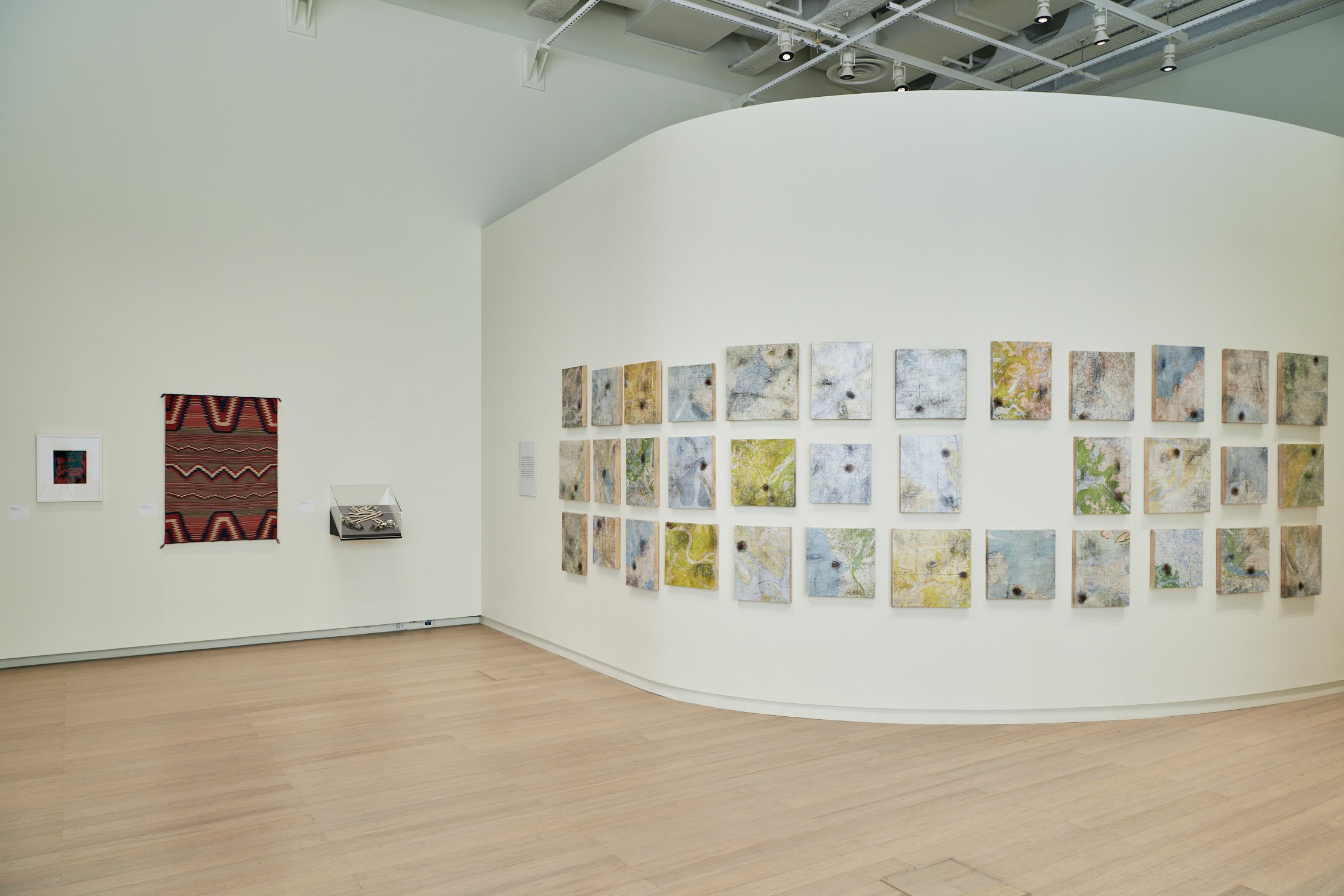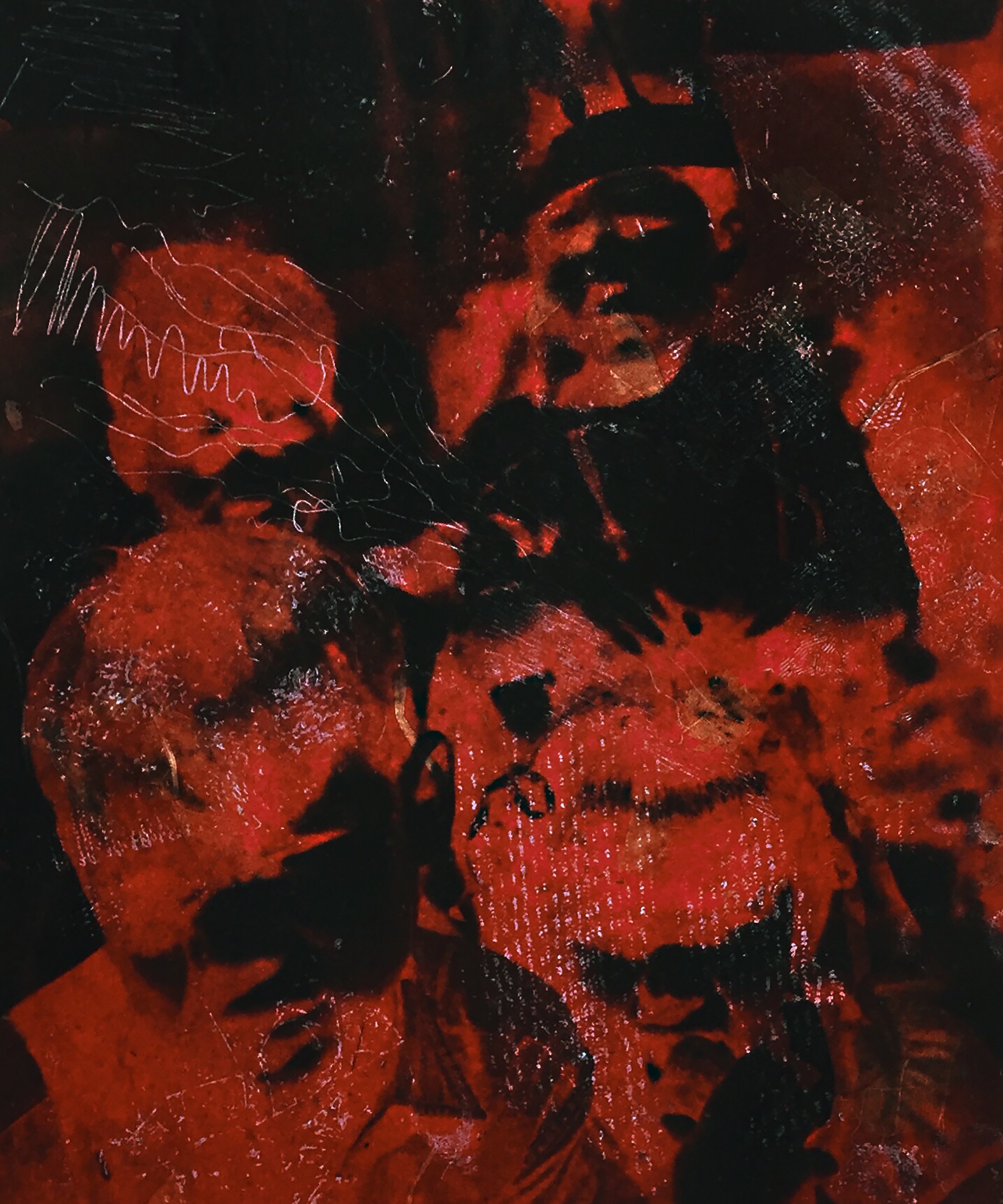Object Relations: Indigenous Belongings showcases a selection of Native American art and cultural heritage objects held in the Collection of Art Properties at Columbia University. These include children-related cultural materials from daily life—wedding moccasins, a cradleboard, a woven child’s blanket, as well as a suite of drawings—by unknown makers from four tribal nations—Apsáalooke (Crow), Kanienʼkehá꞉ka (Mohawk), Diné (Navajo), and Inupiaq. They are paired with works by four contemporary Indigenous women artists—Wendy Red Star, Skawennati, Dakota Mace, and Sonya Kelliher-Combs—from these same tribal nations. The exhibition foregrounds powerful connections across space and time, between contemporary Indigenous artists and their material culture, and the capacity of their art to contextualize and illuminate these objects from Indigenous perspectives. Evoking troubling histories while affirming Native resistance and resurgence, the contemporary works address problematic settler colonial policies which continue to plague Native people.
Responding to the Diné (Navajo) child's blanket (1870–1880) from the collection, Diné artist Dakota Mace created two new works. The Way Things Are, a solarplate Chine collé etching, features unknown children from a boarding school in New Mexico displayed on a red background representing the violence they suffered and their broken lineage. Sis Łichii'í (Diné Sash Belt) is a cotton and wool sash woven by the artist and adorned with buffalo nickel buttons and jingles. Based on the belt worn by Diné women that is passed down to children when they come of age, the sash powerfully connects the Diné child’s blanket back to Dinétah (the Diné homeland).
Object Relations: Indigenous Belongings coincides with the presentation of What is the Use of Buddhist Art? and Time and Face: Daguerreotypes to Digital Prints. Collectively these exhibitions present more than 150 works of art and cultural heritage objects from Columbia’s Collection of Art Properties. Most on view to the public for the first time, they are a fraction of the 13,000+ objects in the spectacular holdings of the collection housed in the Avery Architectural & Fine Arts Library. This wide-ranging collection, built over two centuries, has been acquired principally through donations from alumni and faculty, and includes antiquities, cultural heritage objects, and numerous examples of works of art through the twenty-first century. The mission of the collection is to support educational programs, curricular integration, research, and study.
The Wallach Art Gallery's exhibition programs are made possible with support from the Miriam and Ira D. Wallach Endowment Fund, the Charina Endowment Fund, and the gallery's patrons. The gallery extends special thanks to Jeffrey Hoffeld and an anonymous donor.



